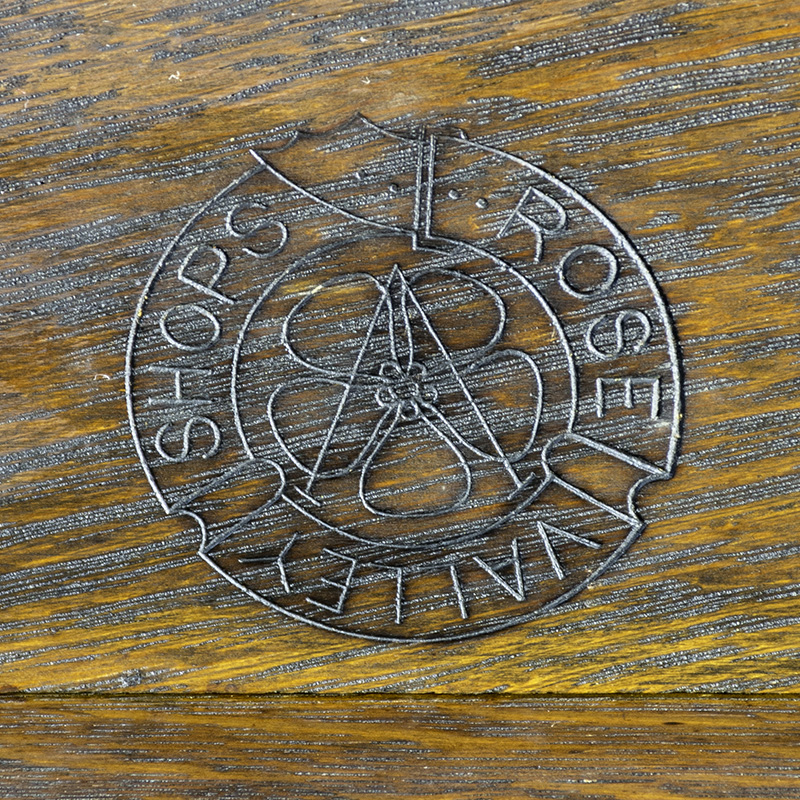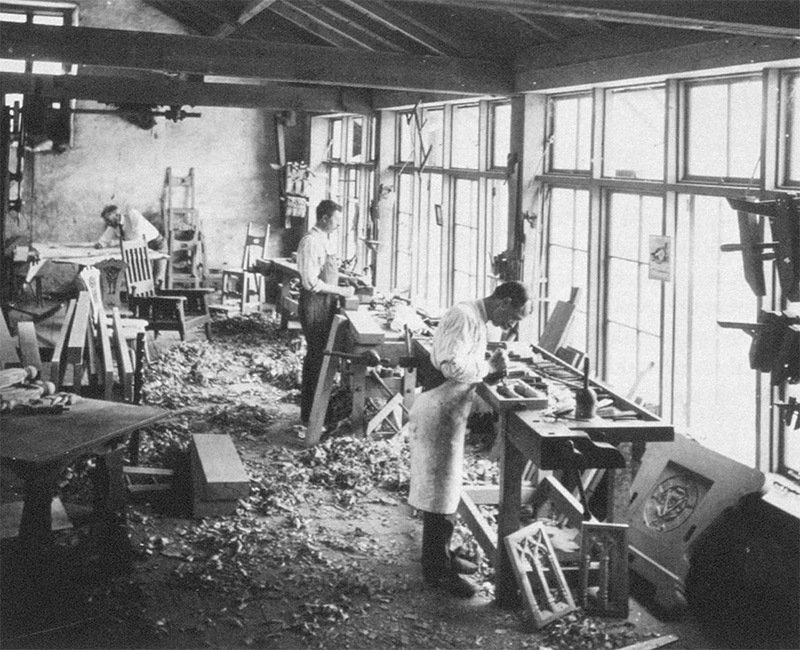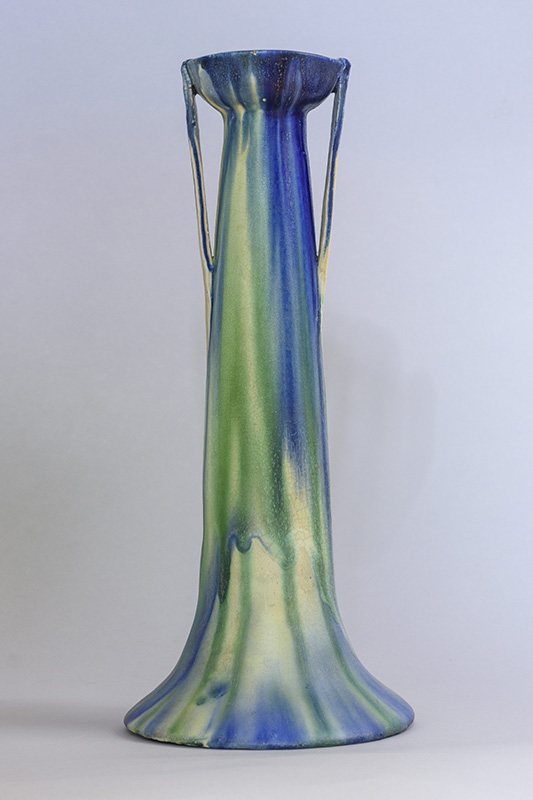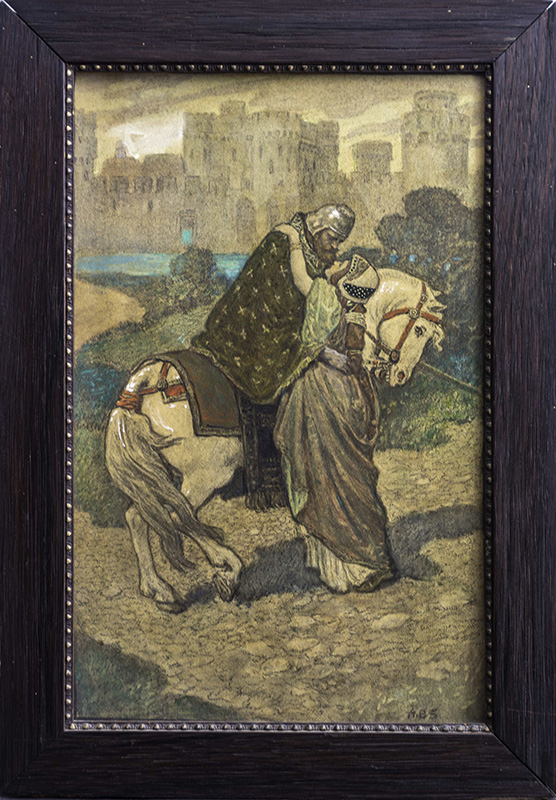The Arts & Crafts Experiment of Rose Valley
by Sue A. Keilbaugh
In 1901, William Lightfoot Price brought together a group of prosperous Philadelphia free thinkers who enjoyed debating current philosophies of reform with the more informal company of his partners, friends, and relatives whose interests lay primarily in aesthetic matters. The consequence was the start of Price’s experimental utopian community based on the Arts & Crafts Movement. Price settled on an area of abandoned mills and mill houses known as Rose Valley, locally referred to as “Rogue’s Valley…, a tumble-down decrepit hamlet, the wreck of dead enterprises.”1 By 1905 the vanishing factory community had been converted into a pastoral village whose architecture and landscape stepped out of William Morris’s 1890 novel News from Nowhere. The rustic village aesthetic intentionally looked as if it existed in a nonindustrial world.
A critical premise of Morris’s ideal place was that “factory work was eradicated and labor was carried out in ‘banded workshops’.”2 These workshops were made up of a small number of craftsmen working together in a “personal relationship” producing a product in a “traditional manner.” In Rose Valley, these included a furniture shop, pottery studio, publisher, and forge. As a guarantee of quality and workmanship, the Rose Valley Association only granted the right to use the Rose Valley seal to three groups. The wild rose superimposed by a “V” (figure 1) surrounded by a buckled belt signified their “banded” status.
The first and most established of the three was the Rose Valley furniture shop, which operated 1901–06. Located in the Old Mill on Ridley Creek, thick boards of quarter-sawn red and white oak were joined together in one of two ways, “loose” or “fixed.” The “loose” construction, secured by a system of interlocking pierced tenons, allowed the piece to come apart for easy moving, storage or convertibility, in the Medieval manner. By contrast, the mortise and tenon joints in the “fixed” furniture were secured by non-removable wooden pegs and glue. The furniture shop (figure 2) crafted individual designs from the imagination of Will Price, stylistically ranging from Gothic (figure 3) to Mission and Colonial Revival, then interpreted by the skills of foreign-born woodworkers led by John Maene. These were sold to high-end clients until the shop closed due to a skilled labor shortage.
To Price, and others, Rose Valley furniture was more than carved wood: it was a philosophical statement, a protest against the shortcomings of the present and the recent past, and a prescription for the future. Craftsmanship is its distinguishing feature, and the artisans charged with turning Price’s designs into reality were allowed a certain spontaneity and creativity of purpose. Price wished to be able to “sense humanity” in a product, with significant variations occurring either by design or by accident of handwork.
The second approved workshop was the pottery studio of William Percival Jervis located in Artsman’s Hall, now Hedgerow Theatre. His arrival marked a professional transformation from writing about ceramics to actually producing art pottery with his own hands. In contrast with many other contemporary potters, Jervis cast his vases and pottery in molds on the philosophical grounds that even thrown pottery is trimmed and smoothed until it becomes as “mechanically true as a machine can make it,” and thus lacked any advantage over a well-cast piece.3 However, it is the glazes that Jervis developed in Rose Valley that distinguish his pottery (figure 4). Rose Valley Pottery is characterized by largely naturalistic, matte glazes with occasional crystalline highlights. Interesting polychromatic combinations pair blues with greens, raspberry with mint, and flashes of brilliant orange on cobalt. The years 1904–05 saw Jervis maturing as an art potter during his short but fruitful tenure at Rose Valley after which he departed for Ohio and then Long Island to establish his own pottery.
The Rose Valley Press was the third and final “shop.” It was developed and articulated largely by Horace Traubel and, unlike the others, was located in Philadelphia in the building that housed the Price and McLanahan Architects offices at 1624 Walnut Street. The Artsman was billed as the official periodical of the Association, serving as a living record of the ideals, philosophies, and products of Rose Valley between 1903–07.
In the heyday of Rose Valley, the village, its architectural style, and philosophical tenets attracted other independent artists and craftsmen to the area as residents. Henry Hetzel and Herbert Walton provided wrought iron objects for nearby homes. Alice Barber, Charles Stephens, and Eleanore Abbott were well-known commercial illustrators who were active members of this idyllic community (figure 5). Although the banded crafts experiment ultimately failed, Rose Valley has held onto its basic roots. As Brandywine River Museum guest curator William Ayres noted, “The landscape, architecture, institutions, and workshops forecast by Morris came to tangible fruition, not in England in the middle of the 19th century, but in America in the early 20th century with William Price and his associates.”4
- William L. Price, “The Rose Valley Fact and Spirit,” Artsman 2, 4, January 1905, 130.
- William Ayres, “A Poor Sort of Heaven, A Good Sort of Earth,” Brandywine River Museum Exhibition Booklet, January 1983, 13.
- William P. Jervis, “Handicraftsman-Conducted by A. Russell Bond, Home-Made Pottery II,” Homes and Gardens 8, 1, January 1911, 22.
- Ayres, 14.
Sue A. Keilbaugh is the Rose Valley Museum Vice President. The Decorative Arts Trust collaborated with the Museum for a two-day Arts & Crafts conference in November.
A print version of this article was published in The Magazine of the Decorative Arts Trust, one of our most popular member benefits. Join today!





